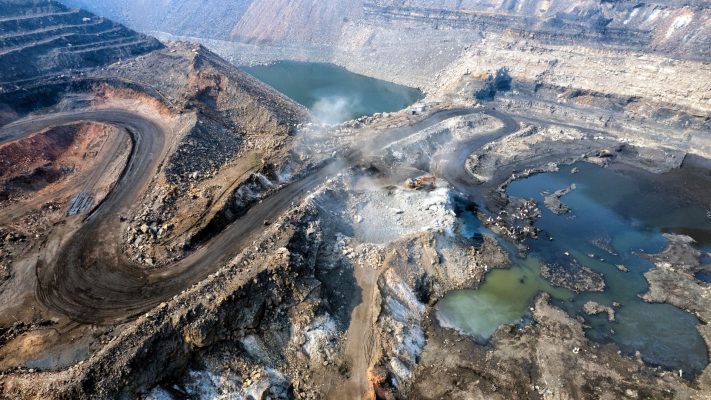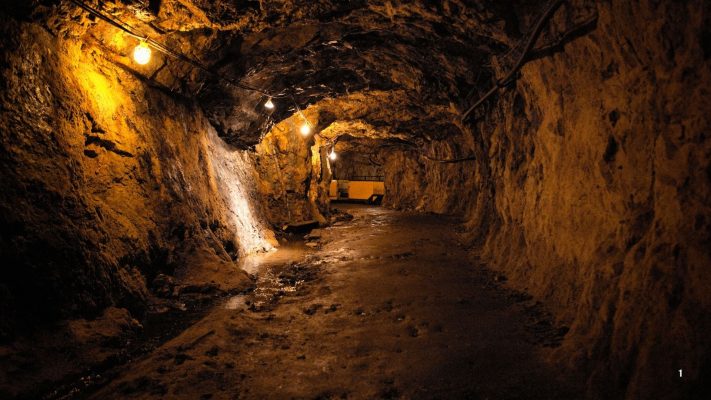Untapped Potential: An Investor’s Guide to Equatorial Guinea’s Diverse Mineral Wealth.
Carl Mbeng | Principal Consultant, Energy Extractives & Climate Specialist | Email: carl@resourceprime.com
Overview
In the dynamic landscape of African mining, a new frontier is emerging with significant, yet largely untapped, potential: Equatorial Guinea. While renowned for its hydrocarbon reserves, the nation’s mineral sector presents a compelling investment thesis, offering a diverse array of resources and a proactive government committed to fostering sustainable development. For discerning investors and mining companies seeking the next high-growth opportunity, Equatorial Guinea warrants serious consideration.
Highlights:
- Equatorial Guinea offers significant, largely untapped mineral potential for investors.
- The nation’s rich, underexplored mineral wealth is supported by a modern and inviting regulatory framework.
- The Ministry of Hydrocarbons & Mining Development is actively seeking partners to unlock this potential.
- While mature African mining hubs face saturated reserves and rising costs, Equatorial Guinea offers a unique convergence of untapped mineral potential, progressive policies, and government-led incentives. Here’s why global investors are taking notice.
A Nation Poised for Mineral Growths.
Equatorial Guinea, situated on the west coast of Central Africa, has historically focused on its substantial oil and gas industry. However, beneath its verdant landscapes lies a rich geological endowment, much of which remains underexplored. The Ministry of Hydrocarbons & Mining Development is now actively inviting companies to participate in direct negotiations for new mining contracts, signaling a clear intent to diversify the national economy and unlock its mineral wealth. This strategic pivot, underpinned by the new Mining Law No. 1/2019, which came into effect on November 29, 2019, provides a robust and transparent framework for international investment. It’s important to note that Equatorial Guinea operates under a civil law jurisdiction, rooted in Spanish civil law, and is a member state of CEMAC and OHADA, meaning their treaties and regulations are directly applicable.
Unveiling Diverse Mineral Resources projects
Recent comprehensive airborne geophysical surveys conducted across the entire country in 2012 have revealed a high potential for a wide variety of minerals, moving beyond the traditional focus on oil and gas. The Rio Muni area, the mainland region of Equatorial Guinea, stands out as an excellent opportunity to explore an unexplored greenstone terrane. This geological setting is globally recognized for its association with significant mineral deposits. The EG Constitution affirms the country’s right to explore and exclusively exploit all mineral resources and riches, as well as its hydrocarbons, with all mineral resources belonging to the State.
Key minerals identified with high potential include:
Gold (Au): The presence of coarse and angular alluvial gold, particularly in areas like Coro, Mongomo, and Aconibe, indicates proximal sources, likely associated with quartz veins and lateritic material. This suggests strong potential for primary gold deposits.
Platinum Group Elements (PGEs) & Nickel (Ni): Large ultramafic dykes in the southeast of the Monts de Cristal Terrane are believed to be a continuation of Gabon’s Kinguele complex, which hosts notable PGE and Ni mineralization. Geochemical ratios (orthopyroxene over clinopyroxene, high MgO, Cr, and Ni content) are analogous to regions with significant PGE concentrations, such as Zimbabwe’s Great Dyke, underscoring the prospectivity.
Diamonds: The Nsork area exhibits kimberlite indicator minerals, a promising sign given its proximity (only 40 km from the border) to the Mitzic diamond kimberlite in neighboring Gabon. This suggests potential for undiscovered kimberlite pipes within Equatorial Guinea.
Columbo-Tantalite (Coltan): Pegmatites, forming structures in a northeast direction across Rio Muni (especially in the northwestern Ntem and eastern Aconibe regions), frequently contain significant coltan mineralization. Coltan is a critical mineral for modern electronics, making these occurrences particularly strategic.
Bauxite (Aluminium Ore): Structurally controlled intrusives and pegmatites in drained upland areas, after deep tropical weathering, have led to bauxite formation.
Base Metals: The geophysical surveys also indicated high potential for base metals, which typically include copper, lead, and zinc. These are often found in association with greenstone belts and other prospective geological structures.
Heavy Mineral Sands: These deposits, often containing valuable minerals like ilmenite, rutile, and zircon, are also identified as having high potential, particularly in coastal and alluvial environments.
Iron Ore: Significant iron ore potential has been identified, which could support future industrial development and export.
Other Strategic Minerals: The new Mining Law also establishes rules applicable to industrial rocks, gravel, radioactive minerals, stones, and precious metals, indicating a broader scope for mineral development.
This diverse mineral portfolio positions Equatorial Guinea as a multi-commodity exploration target, reducing single-commodity risk for investors and offering a broader spectrum of opportunities.
Current State of Mineral Exploration and Development.

While Equatorial Guinea’s mining sector is nascent compared to its hydrocarbon industry, it is actively progressing. Following the EG Ronda 2019, eight exploration licenses were awarded, with one already transitioning into a gold exploitation contract. This demonstrates the government’s commitment to moving projects from exploration to production.
The MMH’s proactive approach in inviting direct negotiations for new mining contracts underscores a desire to accelerate development. The availability of extensive technical data, including geochemical and mineralogical analyses, geological maps, and remote sensing images, significantly aids companies in evaluating opportunities and designing effective work programs.
Investment Climate and Regulatory Framework Considerations
Equatorial Guinea’s investment climate is shaped by its clear and supportive regulatory framework. The Mining Law No. 1/2019 is designed to promote and develop the mining sector, authorizing the MMH to negotiate and sign contracts with both national and foreign companies. The MMH is the sole regulator of the mining sector, responsible for ensuring compliance with the Mining Law, regulating all mining activities, and awarding mining contracts.
Key aspects of the regulatory framework include:
Contract Types: The law classifies contracts into Mineral Prospecting Contracts (up to 300 km
2
for 3+1 years), Mineral Exploration Contracts (up to 150 km
2
or 1,000 km
2
for diamonds, for 2+1 years), and Mineral Exploitation or Production Contracts (initially up to 20 years, extendable). This tiered approach allows for phased investment and evaluation.
Direct Negotiation or Public Tender: Mining Rights may be awarded after consideration of bidders in a competitive international public tender system or by direct negotiation, offering flexibility in the application process.
Fiscal Regime: The fiscal summary includes a Corporate Income Tax rate of 25% on profits and a 15% withholding tax on gross income for non-resident entities. Surface rental fees are competitive: US$1/hectare/year for prospecting, US$2.5/hectare/year for exploration, and US$5/hectare/year for exploitation. A minimum royalty of 3% of the Gross Market Value of the extracted mineral applies from the first year of production. Royalties are payable annually from the first year of production based on the net market price of the extracted mineral.
Local Content & HSE: The law emphasizes local content through requirements for hiring and training Equatorial Guinean citizens and mandates adherence to international best practices for Health, Safety, and Environmental (HSE) protection and reclamation. Companies are required to submit an environmental impact study and a detailed environmental protection and remediation plan. This aligns with global ESG standards, which are increasingly important for investors.
Dispute Resolution: Arbitration provisions are established via the International Chamber of Commerce (ICC), providing a recognized framework for dispute resolution.
Application Factors: Factors considered when granting mining rights include experience, technical and financial capability, planned investment, speed and efficiency of project execution, technical and financial conditions, reinvestment into the EG economy, use of EG personnel, technology transfer, profitability for the State, security and environmental protection, and plans for social projects.
Contract Validity and Termination: A contract for exploration of Mining Rights is valid only after signature by the MMH, ratification by the President of EG, and delivery of a written note of ratification to the company. The State can terminate contracts through nullity, suspension, expiration (e.g., failure to comply with obligations or suspending activities for two years without justification), or revocation (for serious offenses).
Comparison with Regional Mining Destinations:
Compared to some more mature mining jurisdictions in Africa, Equatorial Guinea offers the distinct advantage of being largely underexplored for hard minerals. This translates into:
“First-Mover” Advantage: Opportunities to define new mineral provinces and make significant discoveries.
Less Competition: Potentially lower acquisition costs for prospective ground.
Modern Legal Framework: The recently enacted Mining Law provides a contemporary and clear regulatory environment, designed to attract foreign investment, unlike some older, less adaptable frameworks.
Government Support: A clear governmental mandate to diversify the economy through mining, leading to a more supportive and responsive regulatory body.
While established mining hubs offer proven reserves, Equatorial Guinea offers the excitement and potential for substantial, high-impact discoveries in a relatively uncrowded field.
Future Outlook and Emerging Opportunities
The future of Equatorial Guinea’s mining sector appears promising. The government’s strategic focus on mineral diversification, coupled with the proven geological prospectivity, creates a fertile ground for investment. As global demand for critical minerals continues to rise, the nation’s identified potential for coltan, PGEs, and other strategic minerals positions it favorably in the long term.
Emerging opportunities include:
Greenfield Exploration: Significant potential for new discoveries across various mineral types.
Artisanal Mining Formalization: Opportunities to formalize and industrialize existing artisanal gold operations, bringing in modern techniques and improving efficiency. The Mining Law provides for the obligation to register and obtain authorization for artisanal exploitation of minerals.
Infrastructure Development: Potential for private sector involvement in developing mining-specific infrastructure, such as roads and power, which can be integrated into broader national development plans.
Value Addition: Long-term potential for in-country processing and value addition, moving beyond raw material export.
Equatorial Guinea represents a compelling proposition for investors and mining companies with an appetite for discovery and a vision for sustainable growth in Africa. The nation’s rich, underexplored mineral wealth, supported by a modern and inviting regulatory framework, presents a unique opportunity to be part of a nascent but rapidly developing mining sector.
The Ministry of Hydrocarbons & Mining Development is actively seeking partners to unlock this potential.
Now is the time to consider Equatorial Guinea – a land of untapped potential, ready to reward strategic and responsible investment in its diverse mineral wealth.
******
Navigating the complexities of mining sector project development requires expert guidance. At ResourcePrime, we provide tailored regulatory, policy, and technical advisory services to help you successfully plan, finance, and implement sustainable projects.
Get in Touch Today! Whether you’re a project developer, investor, or policymaker, our team is ready to support you at every stage of your mining project.
Contact us at info@resourceprime.com or visit www.resourceprime.com to learn more! Let’s power sustainable growth together.
**********
